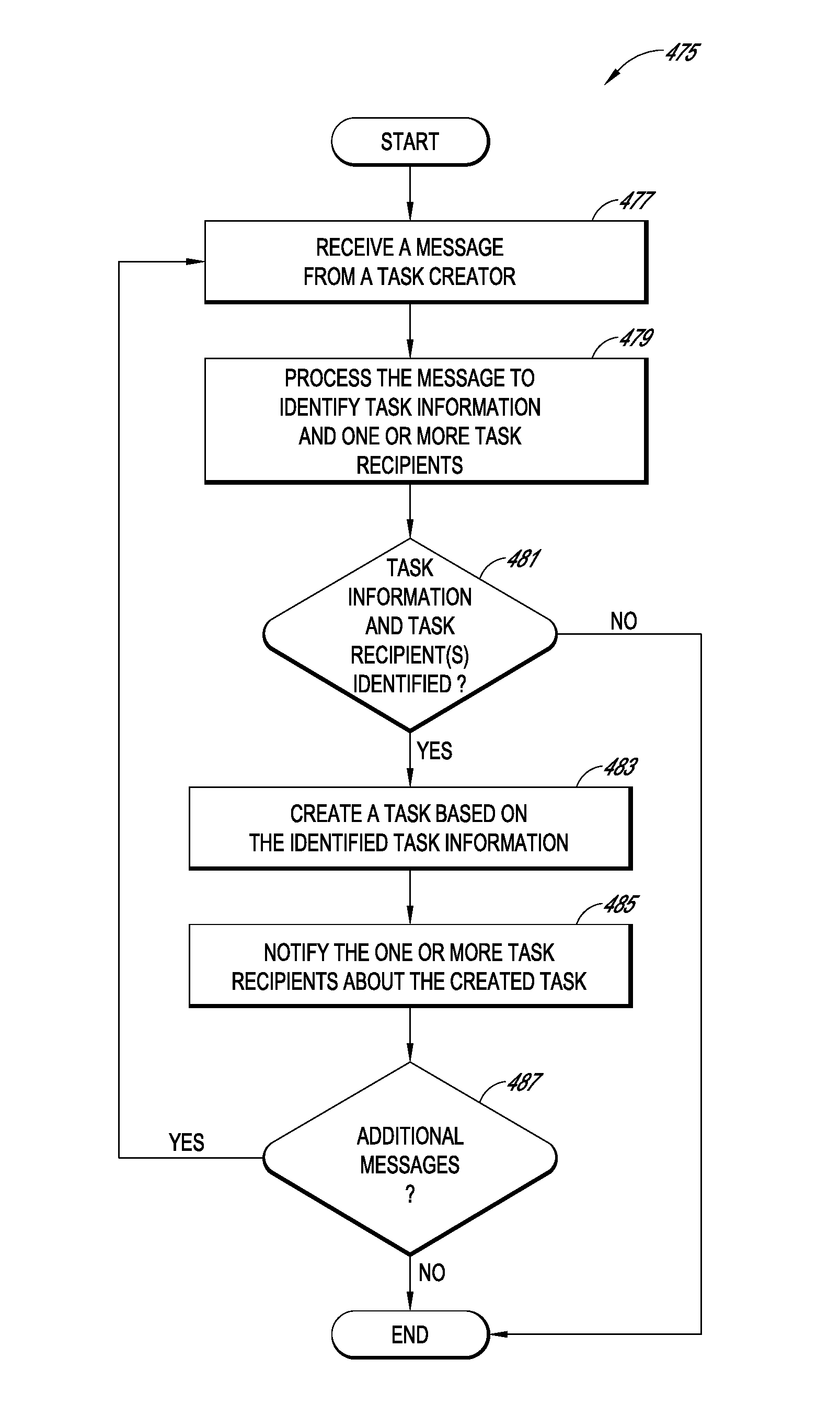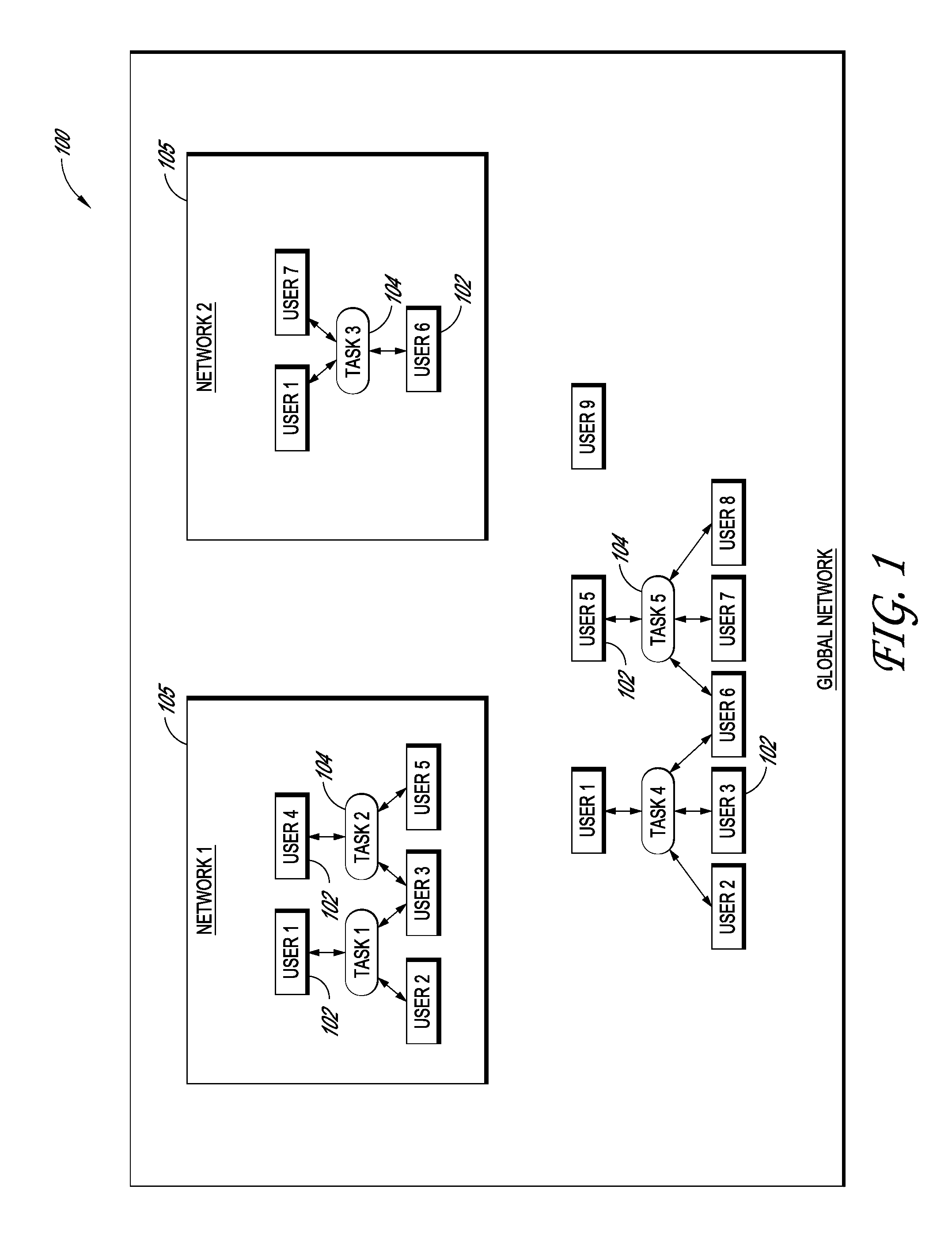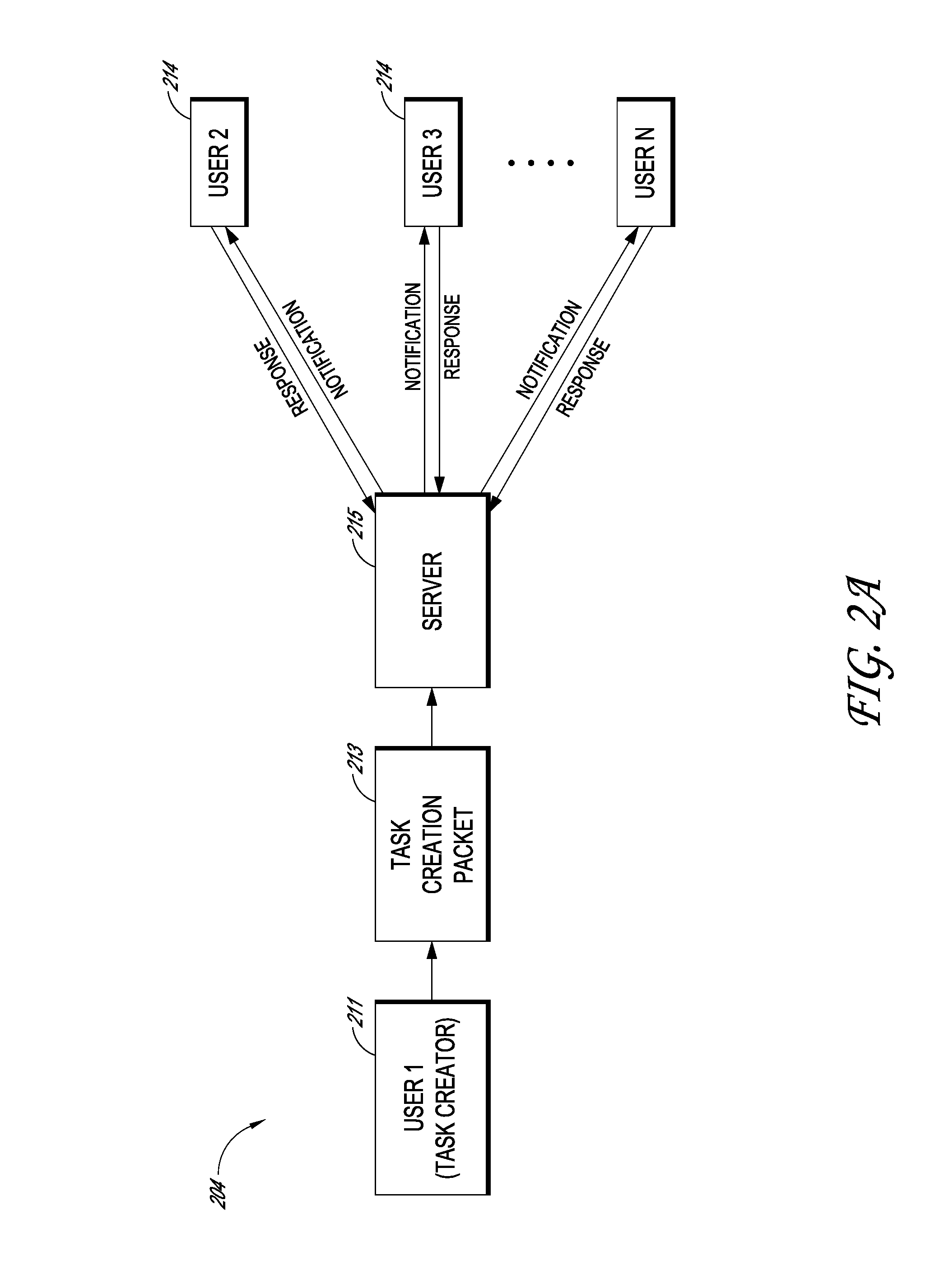Systems and methods for creating and sharing tasks
a task and task technology, applied in the field of system and method for creating and sharing tasks, can solve the problems of difficulty in efficiently managing the various tasks that are required for a project, difficulty in creating and managing tasks over one or more communication networks, and alone may not adequately create a virtual environmen
- Summary
- Abstract
- Description
- Claims
- Application Information
AI Technical Summary
Benefits of technology
Problems solved by technology
Method used
Image
Examples
Embodiment Construction
[0040]The following detailed description of certain embodiments presents various descriptions of specific embodiments of the invention. However, the invention can be embodied in a multitude of different ways as defined and covered by the claims. In this description, reference is made to the drawings where like reference numerals indicate identical or functionally similar elements.
[0041]Embodiments of the invention relate to systems and methods for sharing content and managing tasks within and between networks. For example, a company or organization may set up one or more communications networks to connect its employees to one another. The employees of the company or organization may participate in various projects, and each project can include one or more tasks. When a project needs to be completed, embodiments of the invention can automatically setup and schedule multiple tasks between users. These tasks can be assigned to multiple employees to complete over a predetermined timelin...
PUM
 Login to View More
Login to View More Abstract
Description
Claims
Application Information
 Login to View More
Login to View More - R&D
- Intellectual Property
- Life Sciences
- Materials
- Tech Scout
- Unparalleled Data Quality
- Higher Quality Content
- 60% Fewer Hallucinations
Browse by: Latest US Patents, China's latest patents, Technical Efficacy Thesaurus, Application Domain, Technology Topic, Popular Technical Reports.
© 2025 PatSnap. All rights reserved.Legal|Privacy policy|Modern Slavery Act Transparency Statement|Sitemap|About US| Contact US: help@patsnap.com



